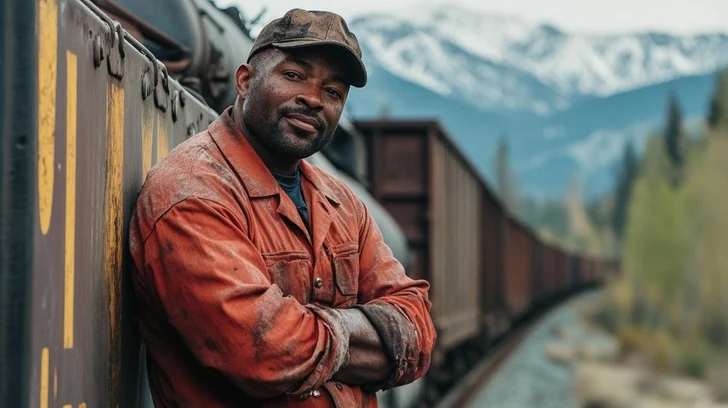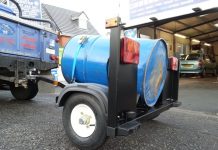
EDMONTON, Alberta – In a bold move that could either revolutionize transportation or set us all back to the 1800s (minus the charm), an Edmonton-based startup has unveiled its magnum opus: the dragline freight system. Think of a nationwide network using a system similar to and adaptable to current railways that is 100% electric, uses cables and not batteries or electrified rails.
The first thought that comes to mind for may are above ground power cabling like an urban light-rail transit system or connected bus system. This couldn’t be further from the truth. The power systems of the dragline system are stationary at major centers, with no need to run power for thousands of miles across the country. The concept, described by some skeptics as “an over-engineered clothesline for trains,” ditches traditional power sources like diesel or batteries. Instead, it relies on stationary winches placed at strategic locations—likely manned by overly enthusiastic engineers with coffee and dreams of steampunk glory—to silently and reliably transport products and resources from point-to-point across Canada.
“What Even Is This Thing?”
If you’re picturing something like overhead trolley cables, you’re wrong. Instead, this system involves massive stationary winches pulling trains along with synthetic rope-cables. Yes, ropes. Not the kind you’d use to tie down your camping gear, but super-futuristic ropes sourced from a DARPA research project because of course it involves DARPA.

“We’re going to build 12 dragline winches capable of pulling several hundred tonnes each, using a new synthetic rope-cable as yet to be specified from a DARPA research project that will be released to the public realm in 2025. This will allow the winches, and pulleys along or under track systems, to effectively pull cars and loading system along to their destinations.” Mitch Vabahoo, Dragline Logistics
The System: As Simple as It Is Overwhelmingly Complicated
The systems would pull cars one direction, while pulling a back-loop of cable behind it, so the process can move in both directions. With a Dragline winch on each end of a delivery track, there will be no downtime and the movement of trains without stopping is designed to mitigate the slow travel of goods, as the top speed will be between 2-3Kph, which is 3 orders of magnitude faster than Canada Post parcel delivery in December.
Initial placement locations would be Edmonton, Calgary, Lloydminster, Lethbridge, Regina, Saskatoon, Winnipeg, Thunder Bay, and Sudbury. Future location would be Fort McMurray, Toronto, Montreal, and possibly a central hub in the Maritime Provinces.

Why, Though?
The slow speed of this system has been described as a “feature,” not a bug, allowing goods to move with the kind of “dignity” typically reserved for royal processions. Meanwhile, proponents insist the winches will be so silent you’ll forget they’re there—just like your cousin who owes you $20.
Critics have already started poking holes in the plan, questioning everything from its viability to why anyone thought a freight system designed for the leisurely pace of geological time was a good idea. One observer quipped, “Is this a freight train or a giant zipper slowly closing the nation together?”
Final Thoughts
While the dragline freight system may not deliver your goods at lightning speed—or even jogging speed—it promises to be sustainable, innovative, and utterly baffling. Whether this becomes Canada’s next big success or a cautionary tale for overcomplicating simple things remains to be seen. But one thing’s for sure: we’re in for a slow, steady ride.

















